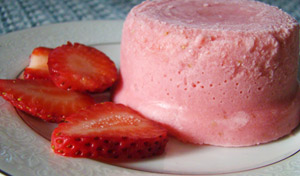I was in the gym the other day and I noticed two young guys working at one of the bench press stations. They would do a set, chat about the functions on their iPhones for 5 minutes, then the other guy would do a set and so on. By the time I had finished warming up, completed 20 working sets and stretched myself out from head to toe, they had just finished with the bench press. I realize that when you are a teenager you don’t have the same responsibilities and time constraints that someone with a family and a full time job does. The problem here is that testosterone levels peak at 30 minutes and begin to drop exponentially at the 60 minute mark making this type of training ineffective if you are trying to build any appreciable muscle mass.
Across from them I watched a couple of guys do what seemed like 25 different exercises during the same time that I did four. Most of them were crap and a total waste of time. Balancing on one leg on a stability ball or contorting yourself on a mat with a 10 lb dumbbell in one hand is only functional if you are a trapeze artist. It is not going to build any significant strength or reap any cardiovascular benefits. These guys would have been much better off ditching the majority of these exercises and doing a few extra sets of some really good ones.
So what constitutes a ‘really good’ exercise ?

Here is my criteria:
- Multi joint movements. An overhead shoulder press is a multi joint movement because it works at both the elbow and shoulder joints. A biceps curl on the other hand is a single joint movement or isolation exercise because it only works at the elbow joint. The more joints you can activate at one time, the more muscle you will build and the more calories you will burn because the movement is more taxing on the system.
- Exercises that allow for the greatest amount of loading. The greater the load you can add to an exercise, the more muscle you are going to build over time. Barbells are great because there is no end to the amount of weight you can add to the ends of the bar. That is why squats and dead lift variations need to be staples in any strength training program.
- Exercises that train the body through a full range of motion. These exercises activate the most amount of muscle, promote symmetry and balance and prevent injuries. That is why I prefer body weight exercises like the body weight lunge for beginners (see the video below). It allows the trainee to practice proper exercise technique while taking their body through a full range without the added stress of a dumbbell or barbell, until they have mastered the movement.
- Exercises that move your joints through a natural range of motion. That is why I hate exercise machines. What machines do is force our bodies to move in a fixed plane. It is unnatural. My body is not meant to move in the exact same plane as yours. That is why I love dumbbells. They allow me to move the resistance the way my body was designed, reducing the chances of injury.
You don’t need more than 4 to 5 exercises to get a great, results producing workout. I prefer one upper body pushing movement, 2 upper body pulling movements, a lower body movement and then one exercise that really isolates my core. Top it off with 5 to 10 minutes of calisthenics for conditioning purposes (jumping jacks, burpees, mountain climbers) and you are good to go.



 Try this luscious, dairy-free, rich, silky and smooth Strawberry Panna Cotta to finish your meal. It has a creamy texture from the coconut milk but holds together nicely because of the gelatin. Look for unflavored gelatin that is sourced from grass-fed, healthy animals to add both an excellent source of pure protein and texture.
Try this luscious, dairy-free, rich, silky and smooth Strawberry Panna Cotta to finish your meal. It has a creamy texture from the coconut milk but holds together nicely because of the gelatin. Look for unflavored gelatin that is sourced from grass-fed, healthy animals to add both an excellent source of pure protein and texture.